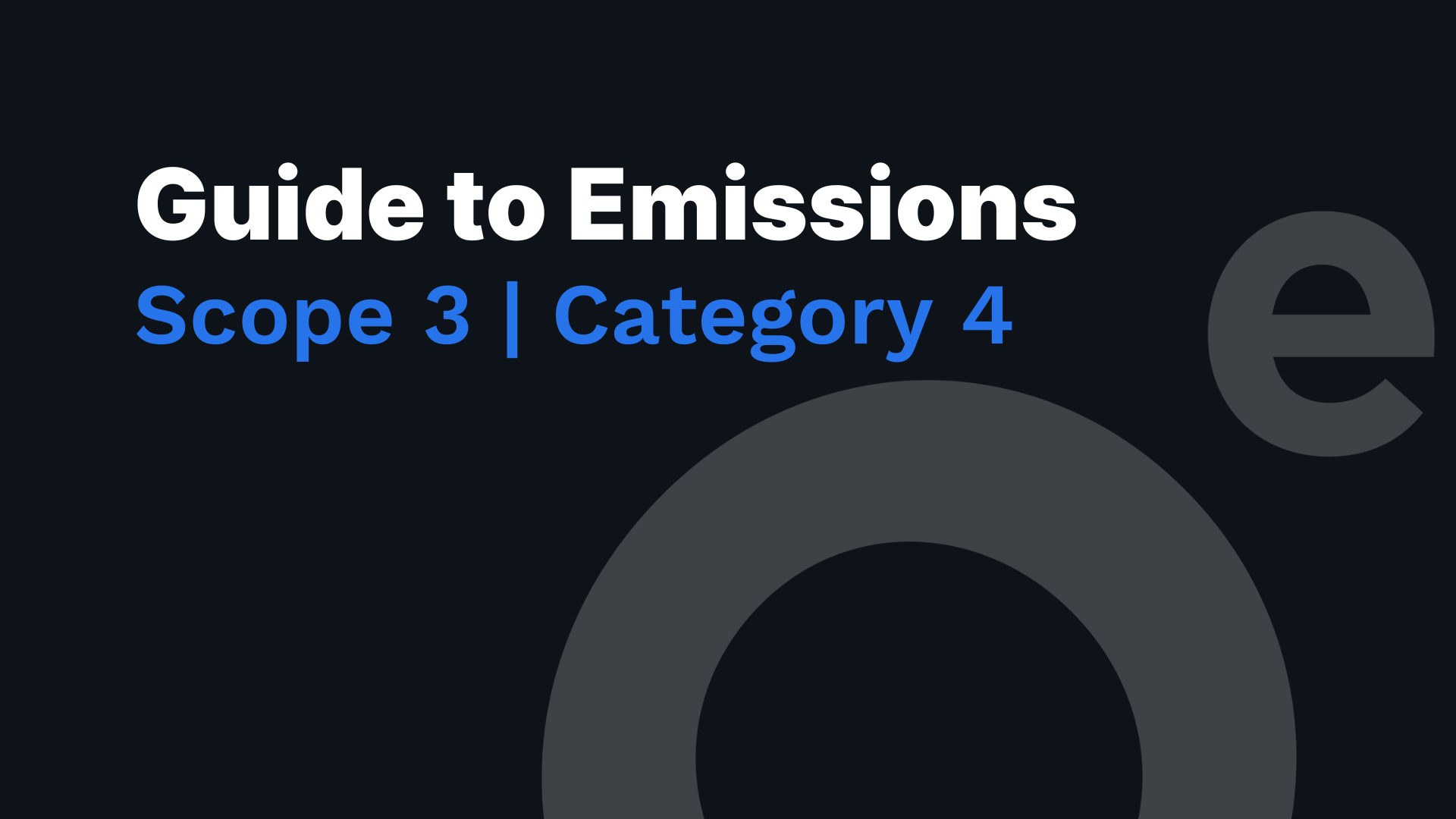What is Scope 3 Category 4 Emissions?
Scope 3 Category 4 encompasses emissions from the following activities:
Transportation and distribution of products procured during the reporting year, involving the movement of goods between a company's tier 1 suppliers and its operations using vehicles not owned or operated by the reporting company. This includes multi-modal shipping with multiple carriers involved in product delivery but excludes fuel and energy products.
Third-party transportation and distribution services purchased by the reporting company within the reporting year, whether directly or through intermediaries. This covers inbound logistics, outbound logistics (such as the transportation of sold products), and third-party transportation and distribution between the company's own facilities.
Outbound logistics services purchased by the reporting company are categorized as upstream because they are a purchased service.
What Data is Needed to Calculate these Emissions?
To calculate emissions from Scope 3 Category 4, which pertains to upstream transportation and distribution, businesses need to collect the following data:
Transportation and distribution activities: Gather information about the types of transportation and distribution activities related to purchased products, including inbound logistics, outbound logistics, and third-party transportation between the company's facilities.
Distance and mode of transportation: Obtain data on the distances traveled and modes of transportation (e.g., truck, rail, air, or sea) used for moving goods between suppliers, company operations, and customers.
Vehicle load factors: Collect data on the average load factors for each mode of transportation, which represents the capacity utilization of the vehicles involved.
Fuel consumption: Acquire data on the fuel consumption associated with each mode of transportation used.
Emission factors: Gather appropriate emission factors for each mode of transportation, which can be obtained from sources like the GHG Protocol, the Intergovernmental Panel on Climate Change (IPCC), or national or regional environmental agencies.
Outsourced transportation services: Collect data on any third-party transportation and distribution services purchased by the company during the reporting year.
Once all relevant data is collected, companies can calculate their Scope 3 Category 4 emissions by applying the appropriate emission factors to the transportation and distribution activities, accounting for distance, mode of transportation, vehicle load factors, and fuel consumption.
What Method is Available?
The following methods can be used to calculate emissions related to upstream transportation and distribution of the reporting company:
Fuel-based method: Calculate the amount of fuel consumed (accounting for scope 1 and scope 2 emissions of transport providers) and apply the corresponding emission factor for that fuel type. • Distance-based method: Identify the weight, distance, and mode of each shipment, and then apply the suitable mass-distance emission factor for the specific vehicle used. • Spend-based method: Determine the money spent on each mode of business travel transport and apply secondary (EEIO) emission factors.
These aforementioned methods provide clear options for businesses to assess their transportation and distribution-related emissions, allowing them to choose the most appropriate approach for their needs.
